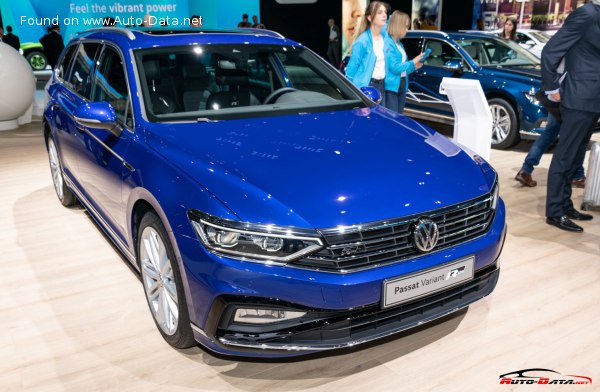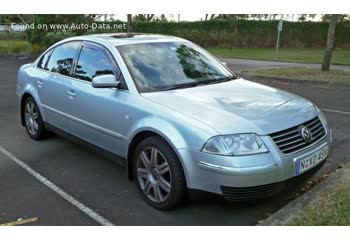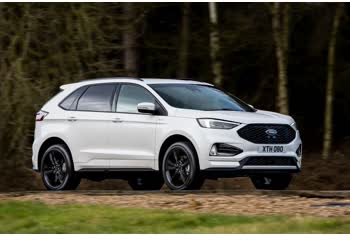Everything you need to know about specifications and performance - Volkswagen Passat 2019 - 2.0 TDI (150 Hp)

Overview:
What is the engine capacity of a Volkswagen Passat 2019?
The engine capacity of the Volkswagen Passat 2019 is 1968.
Volkswagen Passat 2019 How many horsepower?
The engine power of the Volkswagen Passat 2019 is 150 Hp @ 3500-4000 rpm..
What is the Volkswagen Passat 2019 engine?
Volkswagen Passat 2019 engine is DBGA, DCYA, DFEA. (Click to see other cars using the same engine)
How much gasoline does a Volkswagen Passat 2019 consume?
The Volkswagen Passat 2019 consumes 4.0-4.1 liters of gasoline per 100 km
General:
Brand: Volkswagen
Model: Passat
Generation: Passat Variant (B8, facelift 2019)
Modification (Engine): 2.0 TDI (150 Hp)
Start of production: August, 2019
End of production: 2023
Powertrain Architecture: Internal Combustion Engine
Body type:Station wagon
Seats: 5
Doors: 5
Engine:
Engine systems: Start & Stop System
Power: 150 hp @ 3500-4000 rpm.
Power per litre: 76.2 hp/l
Torque: 340 nm @ 1600-3000 rpm.
Engine Model/Code:DBGA, DCYA, DFEA
Engine displacement: 1968
Number of cylinders: 4
Engine configuration: Inline
Number of valves per cylinder: 4
Fuel injection system: Diesel Commonrail
Engine aspiration: Turbocharger, Intercooler
Engine oil capacity: 4.7 l
Engine layout: Front, Transverse
Performance:
Fuel Type: Diesel
Fuel consumption (economy) - urban: 4.5-4.6 l/100 km
Fuel consumption (economy) - extra urban: 3.6-3.8 l/100 km
Combined fuel consumption (WLTP): 4.8 l/100 km
Fuel consumption (economy) - combined (NEDC): 4.0-4.1 l/100 km
Fuel consumption at Low speed (WLTP): 5.7 l/100 km
Fuel consumption at Medium speed (WLTP): 4.8 l/100 km
Fuel consumption at high speed (WLTP): 4.3 l/100 km
Fuel consumption at very high speed (WLTP): 5.1 l/100 km
Fuel consumption (economy) - urban (NEDC): 4.5-4.6 l/100 km
Fuel consumption (economy) - extra urban (NEDC): 3.6-3.8 l/100 km
Fuel consumption (economy) - combined: 4.0-4.1 l/100 km
Emission standard: EURO VId - TEMP - EVAP - ISC
Acceleration 0 - 100 km/h: 9.1 sec
Acceleration 0 - 62 mph: 9.1 sec
Maximum speed: 213 km/h
Weight-to-power ratio: 9.9 kg/Hp, 101 Hp/tonne
Weight-to-torque ratio: 4.4 kg/Nm, 229 Nm/tonne
Acceleration 0 - 60 mph: 8.6 sec
Space:
Kerb Weight (kg): 1485
Max. weight (kg): 2140
Max. roof load: 100 kg
Max load (kg): 655
Trunk (boot) space - maximum: 1780 l
Trunk (boot) space - minimum: 650 l
Permitted trailer load with brakes (12%): 2000 kg
Fuel tank capacity: 66 l
AdBlue tank: 16 l
Permitted trailer load without brakes: 750 kg
Permitted towbar download: 90 kg
dimensions:
Length: 4773-4889 mm
Width: 1832 mm
Height: 1516 mm
wheelbase: 2786 mm
Width including mirrors: 2083 mm
Front track: 1578-1586 mm
Rear (Back) track: 1564-1572 mm
Minimum turning circle (turning diameter): 11.7 m
Powertrain, Suspension and Brakes:
Drivetrain Architecture: The Internal combustion Engine (ICE) drives the front wheels of the vehicle.
Drive wheel: Front wheel drive
Number of gears and type of gearbox: 6 gears, manual transmission
Front brakes: Ventilated discs
Rear brakes: Disc
Assisting systems: ABS (Anti-lock braking system)
Steering type: Steering rack and pinion
Power steering: Electric Steering
Tires size: 215/60 R16; 215/55 R17
Wheel rims size: 6.5 J x 16; 7J x 17
See also

Other generation.
Its production began in 2001 until 2004

Same production year and almost the same engine capacity.
Its production began in 2019 until 2020
Write a comment